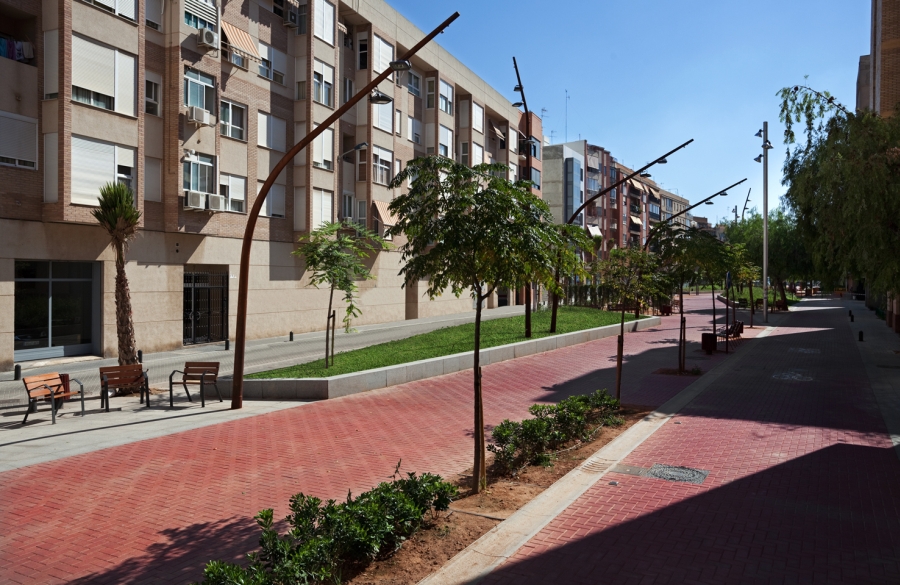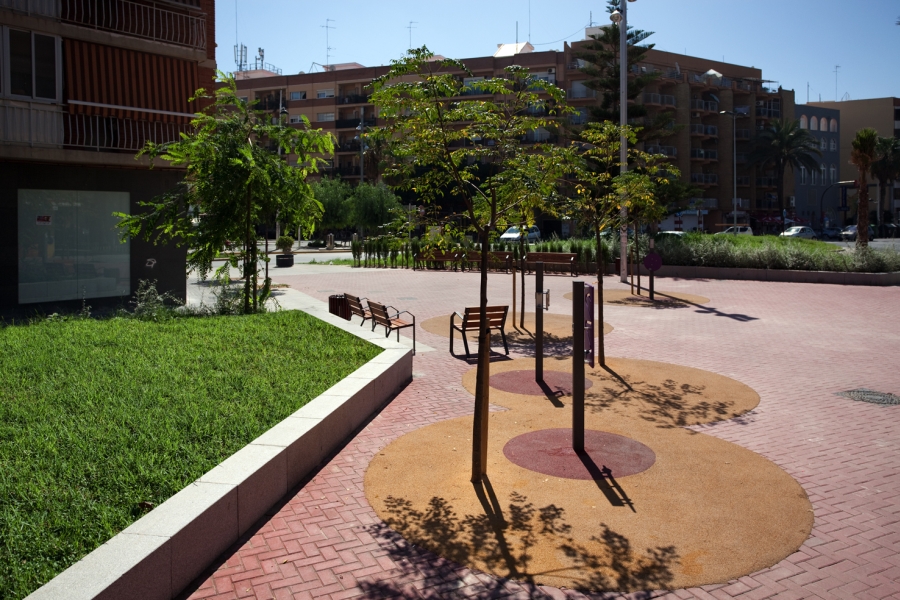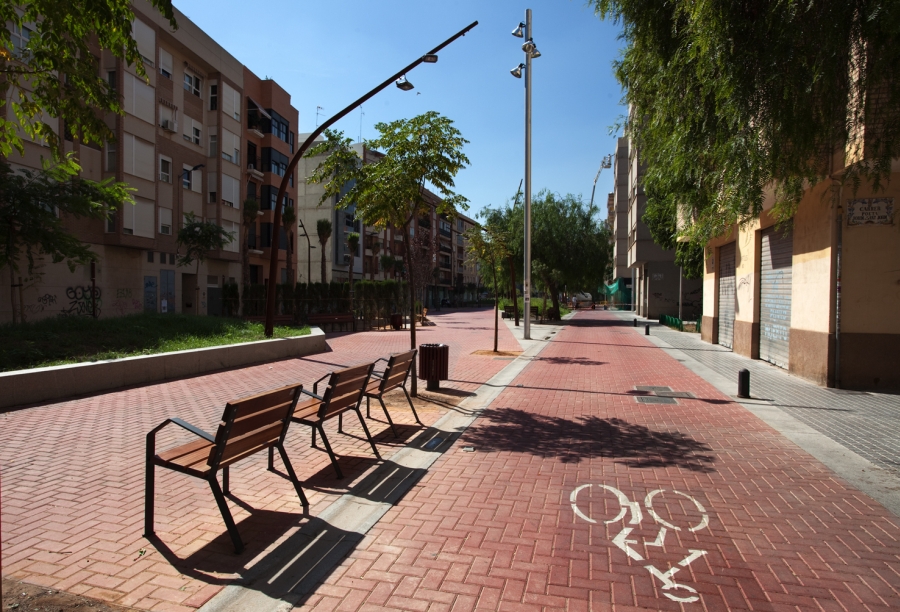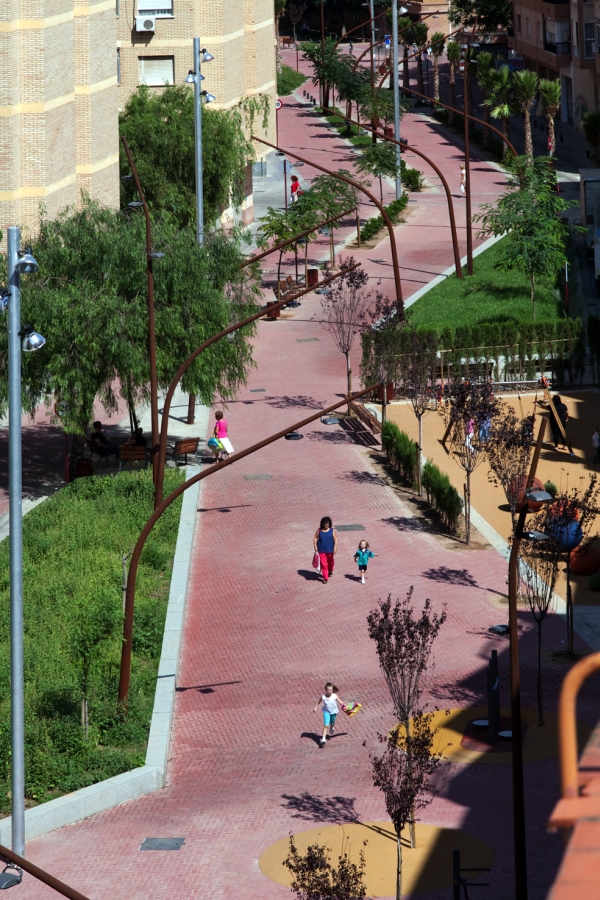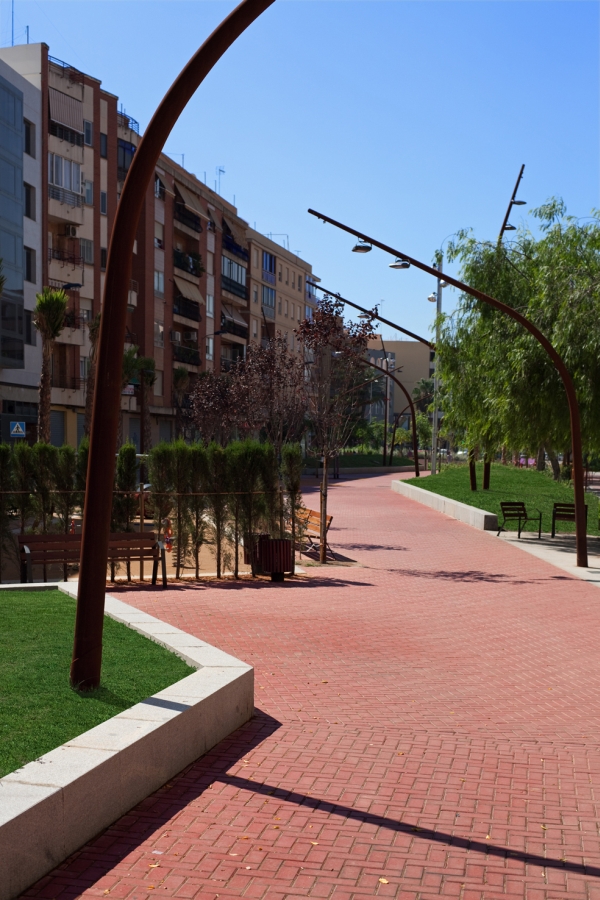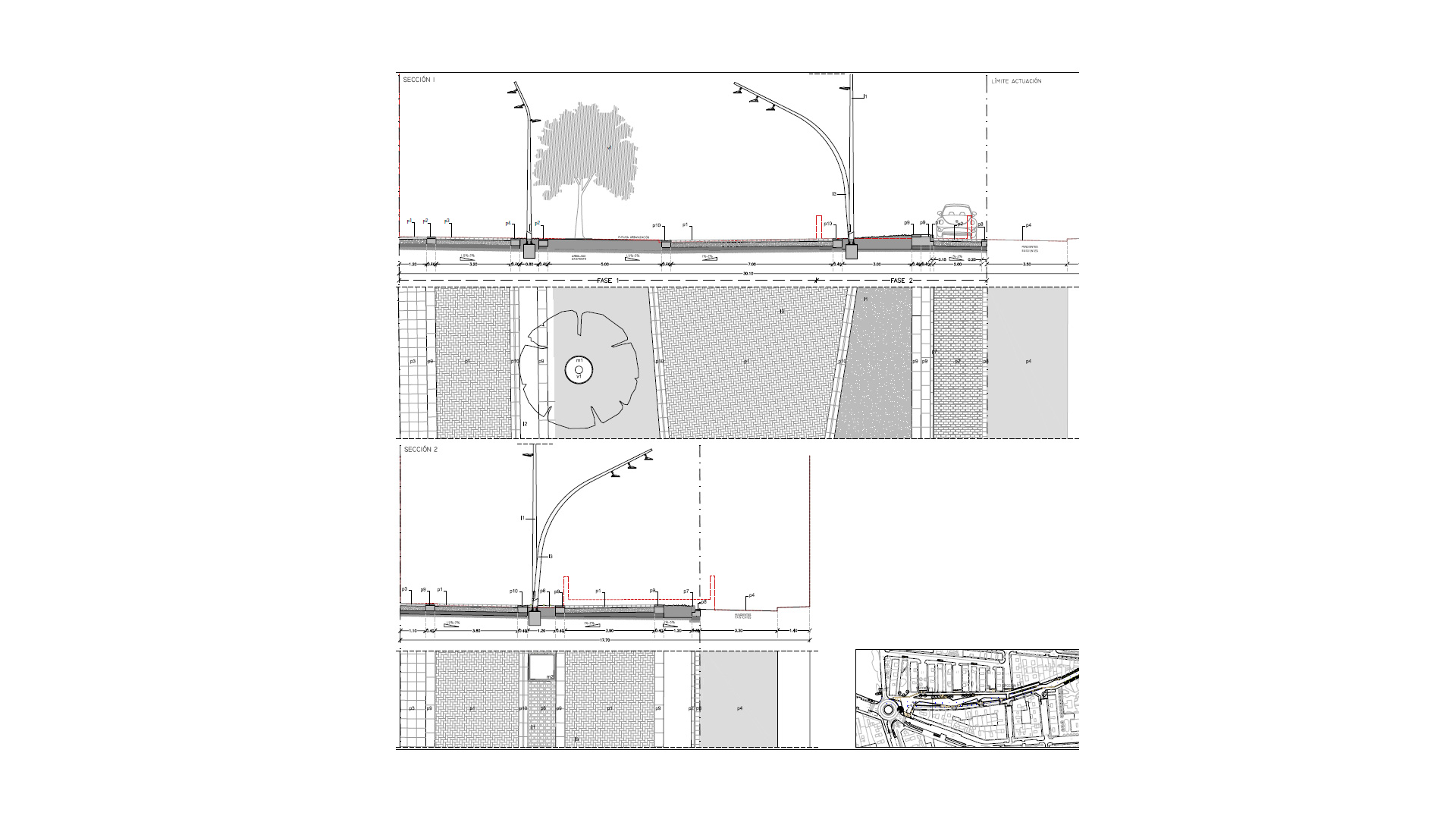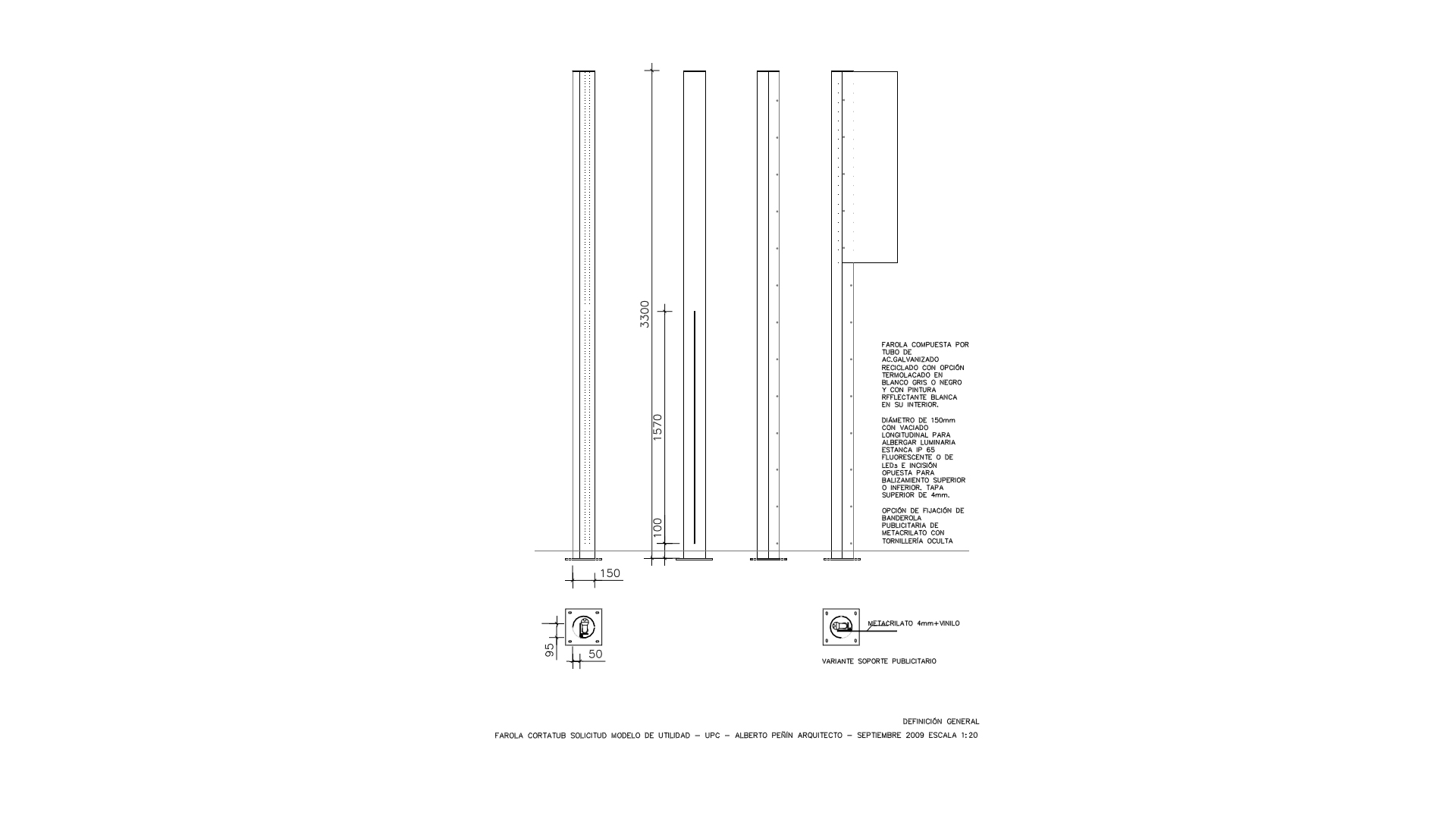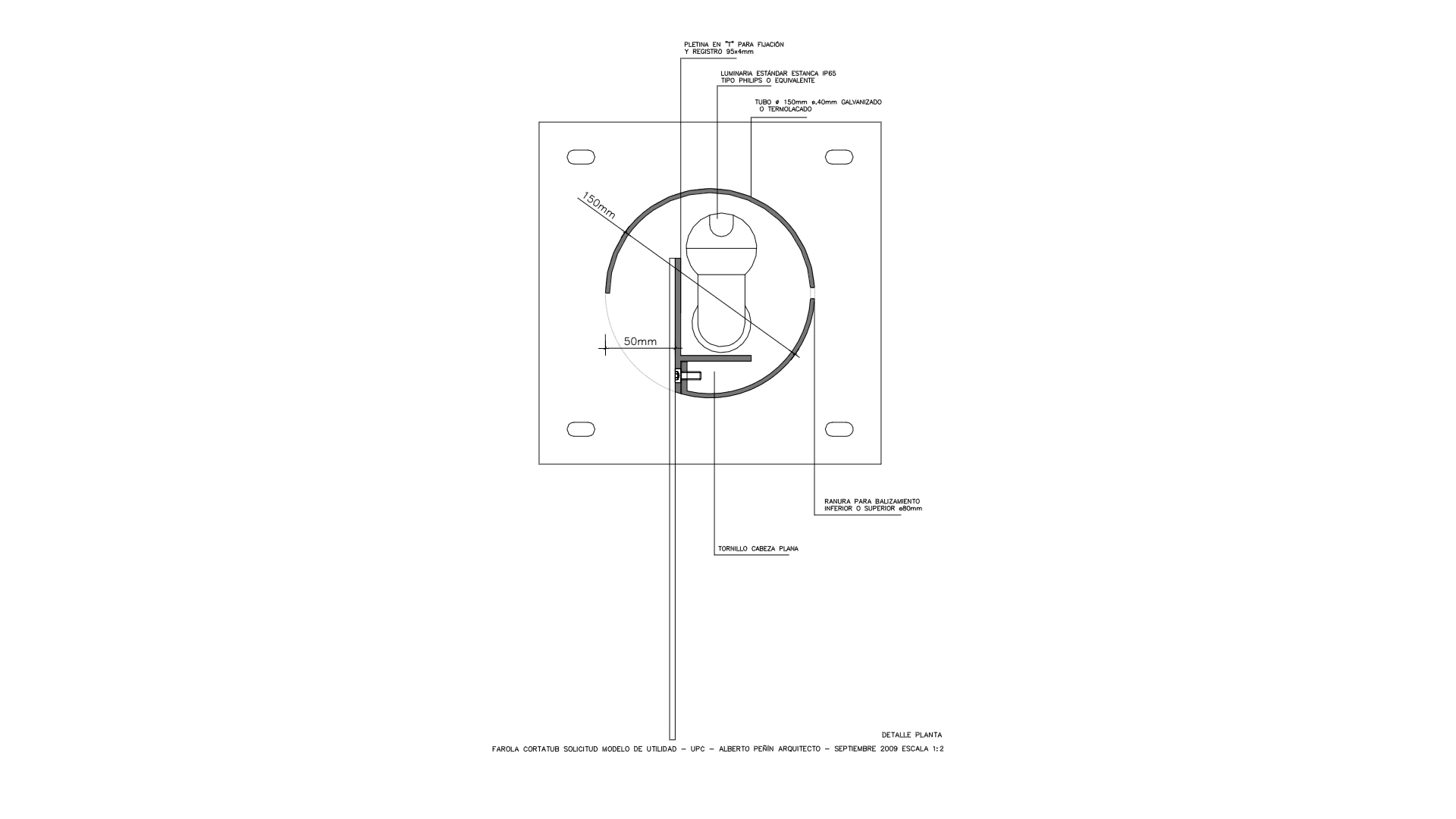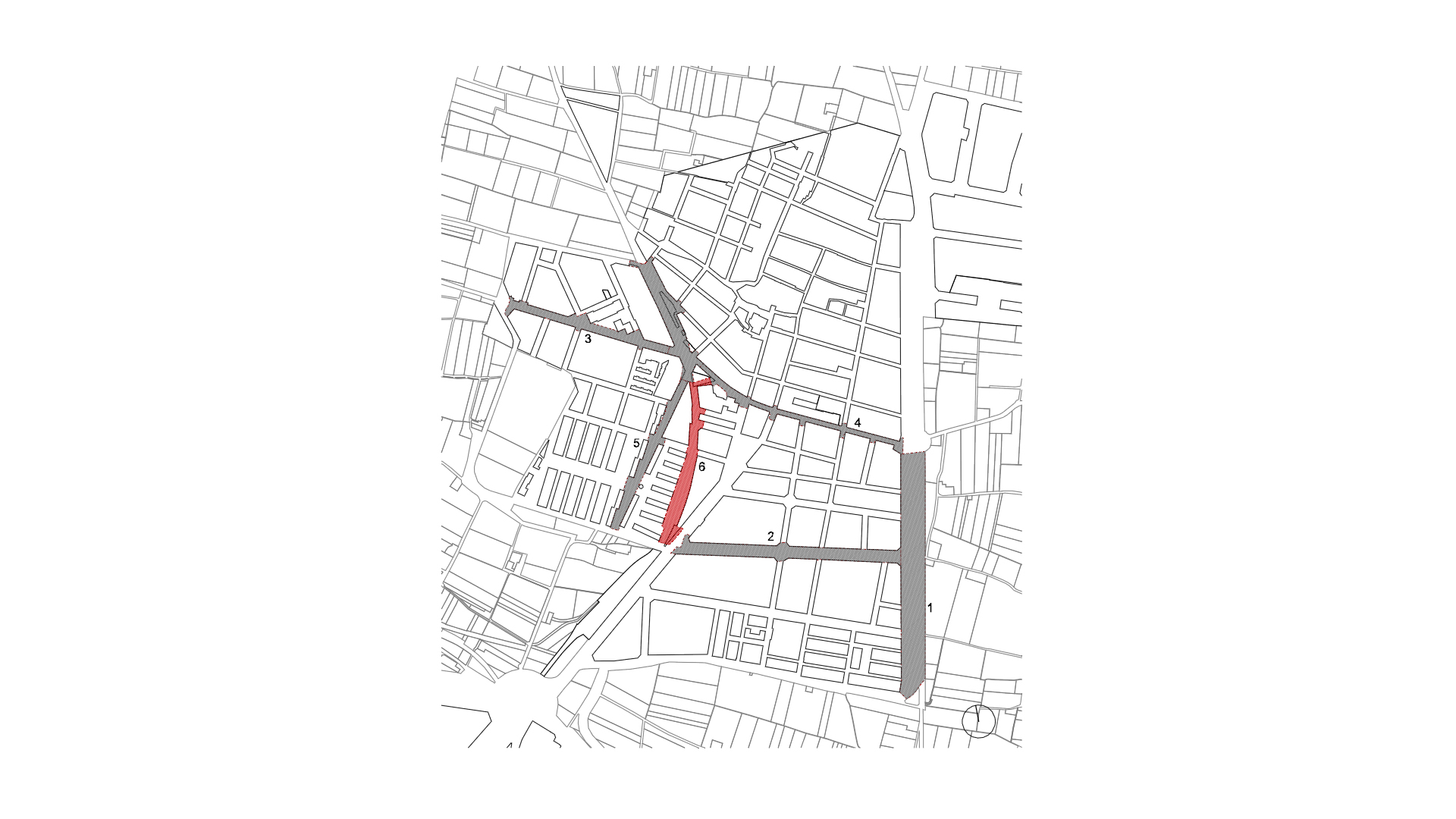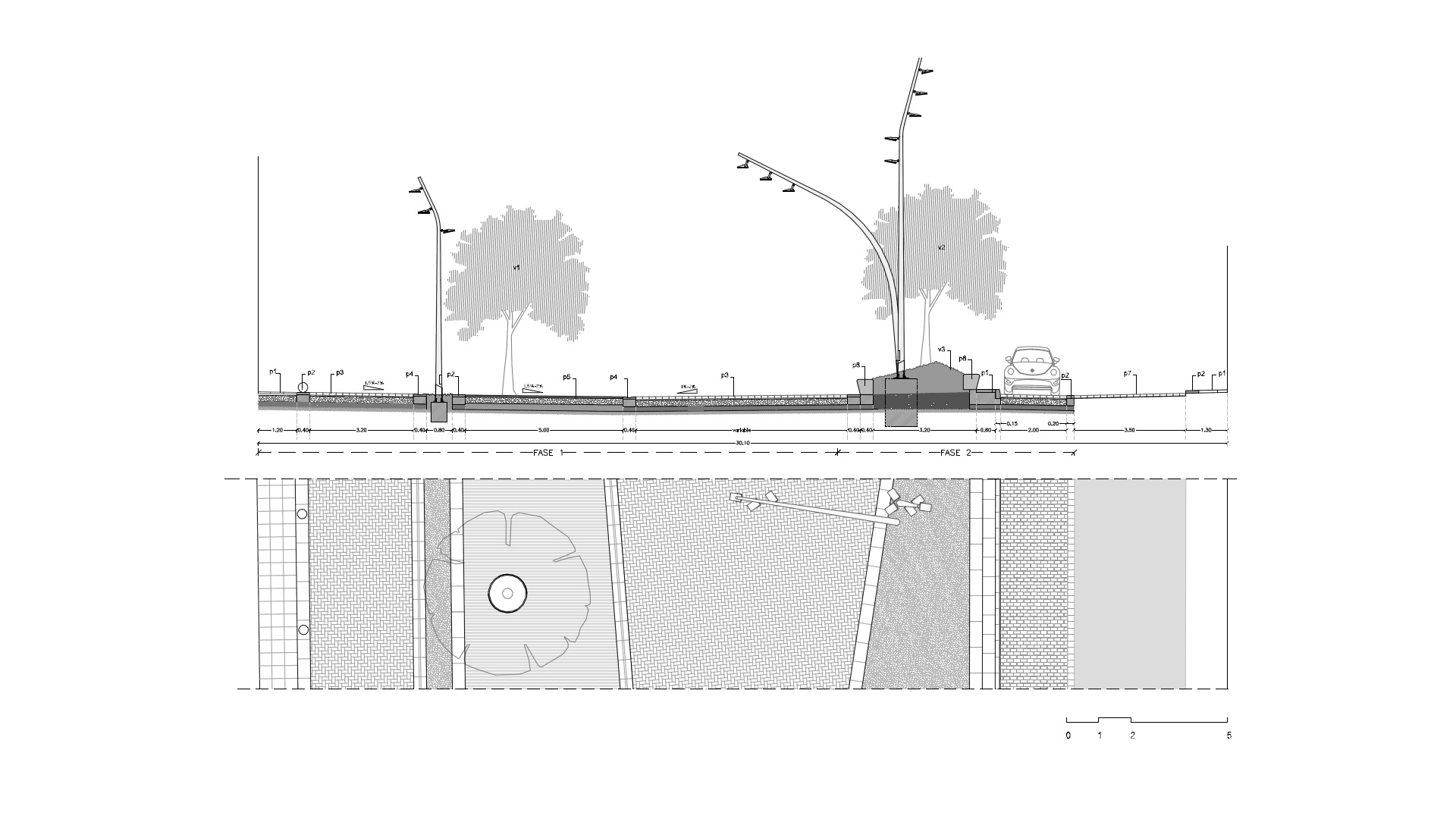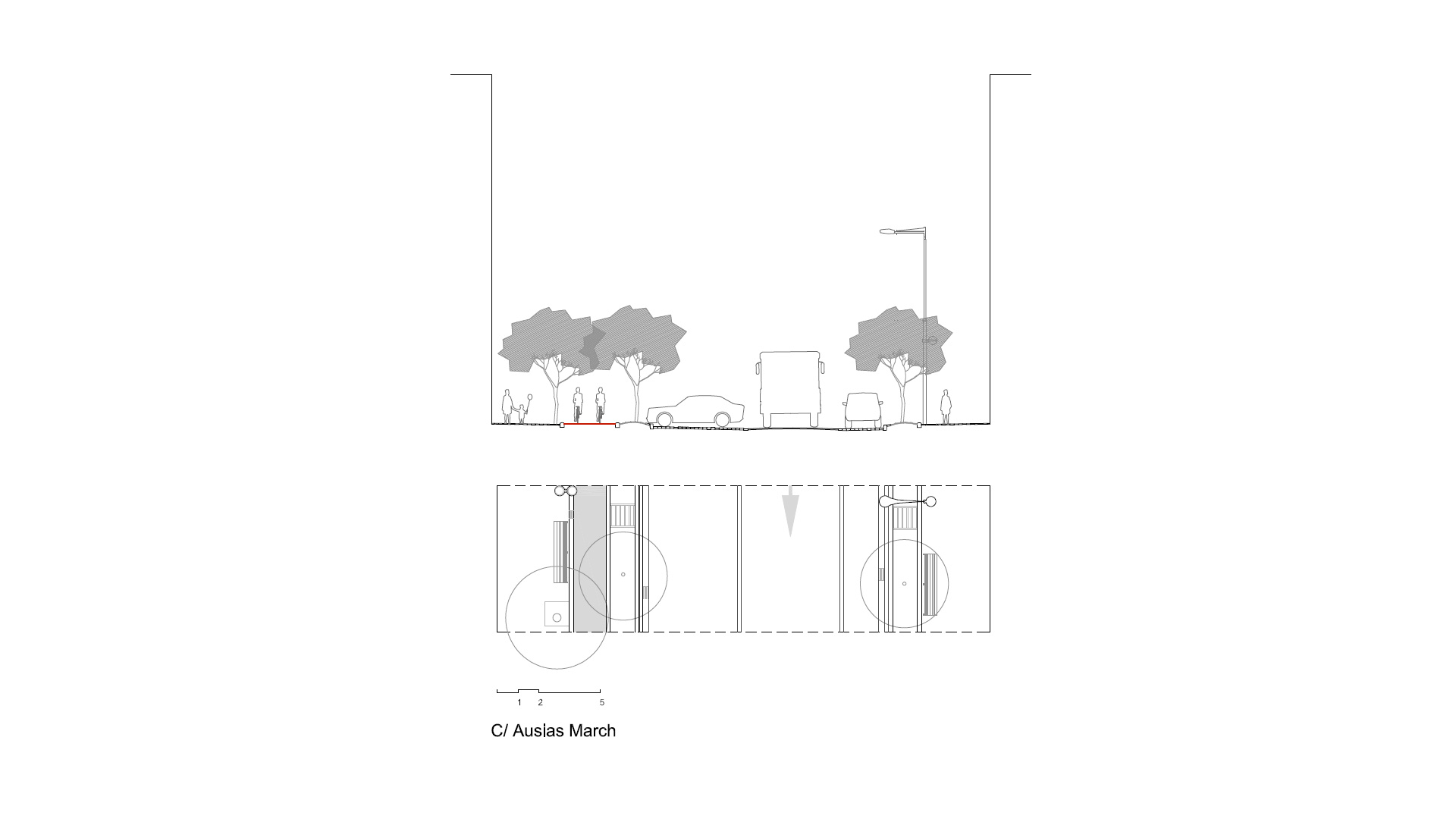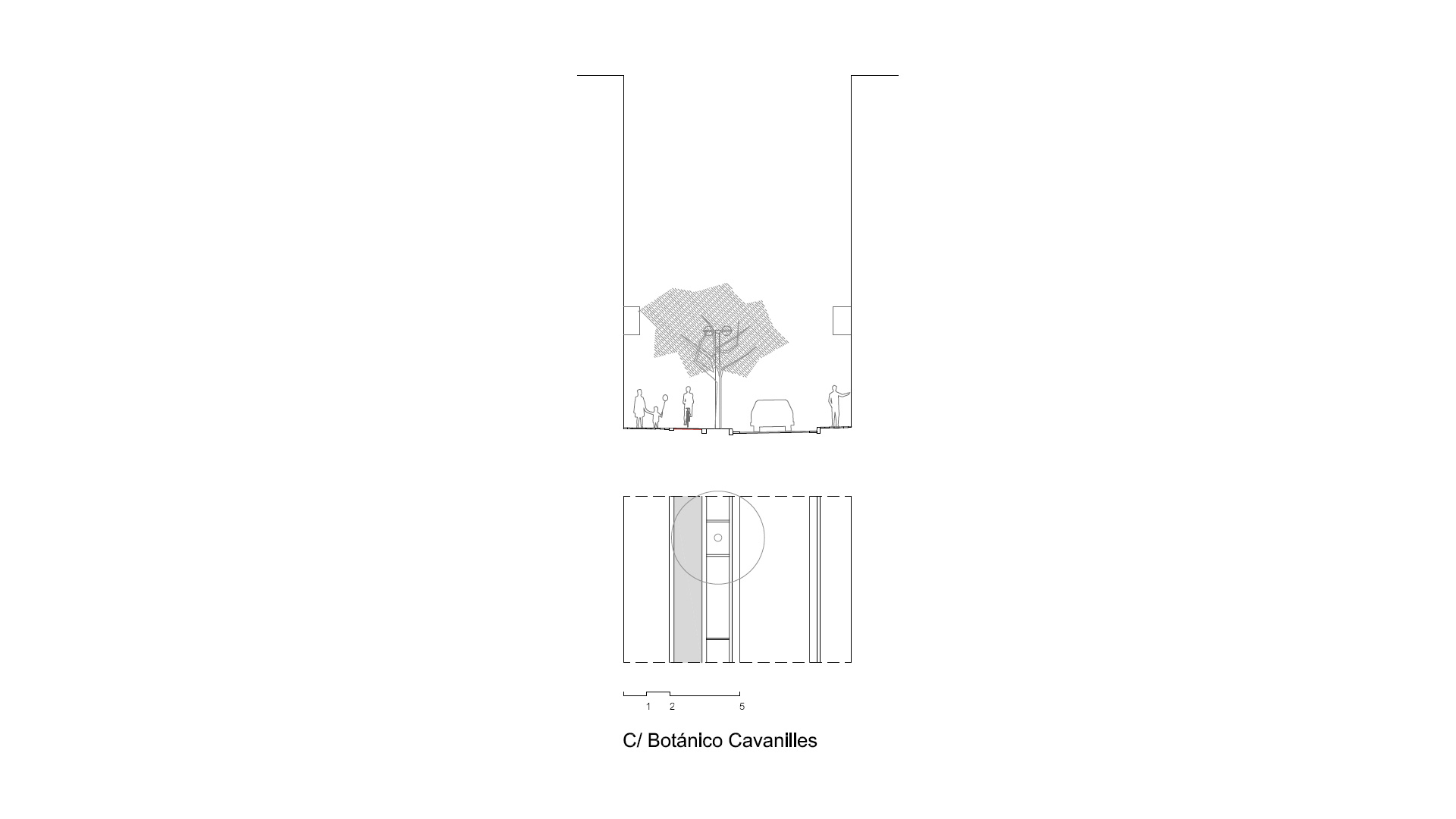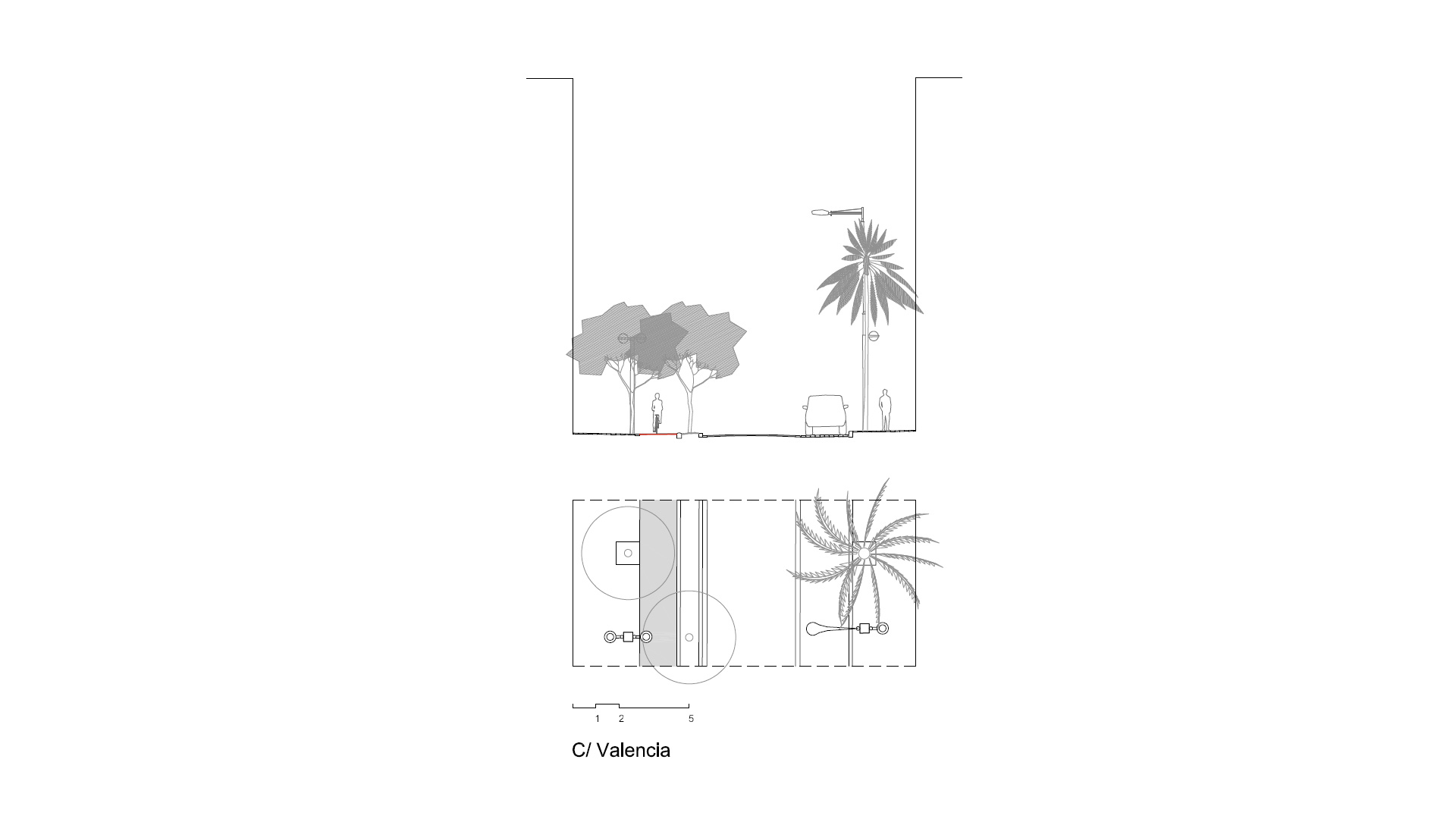Parque de las Vías
Adecuación de infraestructuras urbanas, ejecución de rotonda y carril bici en calle julio just y adyacentes.
Architec/s
Pablo Peñín (Peñín Arquitectos SLP) y Elisabet Quintana
Dirección obra
Pablo Peñín (Peñín Arquitectos SLP) y Alberto Vallejo (Seguí -Vallejo SL)
Client
Ayuntamiento de Alboraya
Construction company
ALDESA CONSTRUCCIONES S.A.
Project date
Año de proyecto 2010
Obra 2011
Budget
1.135.307,71 €
Built area
10. 373,44 m2.
Description
URBAN INTERVENTIONS IN PUBLIC SPACE, ALBORAYA
Alboraya is a town of 22.000 inhabitants located on a fertile area to the north of the city of Valencia, and practically integrated within the capital’s conurbation. It consists ot two different agglomerations, one by the coast, and the main one in the fertile hinterland, surrounded by a considerably well preserved landscape.
During the last decade, Alboraya has commited to the improvement of its urban environment, promoting a series of interventions that aim to create a new public spaces network that articulates the city.
These projects, albeit different in nature, follow similar guidelines: increase of sidewalks width to ensure the comfort of pedestrian space, creation of a bike lane network, tree planting, improvement of accesibility and unification of the different materials and design solutions.
The culmination of these interventions will be the Lane Park, a project springing from the opportunity to lay the railway line no. 3 underground as it runs across the town. These tracks were, on the surface, enclosed by a fence which divided the urban center into two isolated parts with scarce connection points, three of them being street-level crossings, with the resulting danger to the citizens. This situation led to extreme mobility issues and resulted in a serious lack of urban space structure.
Taking advantage of this tunneling project, the city council decided to turn the former railway trail into a pedestrian pathway, creating a new public space for its inhabitants, while guaranteeing pedestrians and bicycle mobility.
This urban axis will ultimately articulate the new public spaces grid.
LANE PARK
The project consists of a pedestrian path laid out between two railway stations, which provides complete transversal connection. This new space also seeks to attract interest by itself, accomodating pleasant areas for citizen meeting and resting, playgrounds for children, and elderly excercising areas.
The integration of the project with its surroundings is considered essential, which led to the use of design elements (particularly vegetation and paving) already existing in the urban design of nearby spaces.
The intervention geometry is made up of fractured lines which provide the pathway with contiguous spaces dedicated to different uses, as well as more sheltered areas that encourage social intercourse. These adjacent areas are in some cases elevated planters circled by a granite linear element that serves as a bench.
Rainwater is collected through a granite drainage channel placed at the center of the pathway, and connected to the town’s general water collection network.
The peripheral paving is solved with the same grey stone used in most of the nearby streets, seeking a direct relation with the surroundings, whereas the central segment is uniformly paved with a prefabricated red floor tile that visually unifies the path along its varied cross section and the mixed typologies of the adjacent buildings. The same tile but in a gray hue is used in the east service lane. Other elements such as curbs, drain channels, special pavement pieces, planters fencing, etc, have been solved with grey flamed granite. Tinted rubber paving was used on the playground areas.
Special emphasis has been put on lighting design. Organic looking poles with several spotlights attached provide a soft light randomly distributed along the park. At the access areas, lighting is enhanced with high poles and additional spotlights.
Vegetation has been an important subject as well, from the beginning the choice to preserve the majority of existing trees was made with a double purpose; to integrate the proposal with nearby green areas, and to take advantage of the already grown foliage from the very start.
The landscaping was completed with additional planting of trees inside the parterre gardens, aligned palm trees, and other trees that provide shade and make the Lane Park a new green area for the town of Alboraya.


